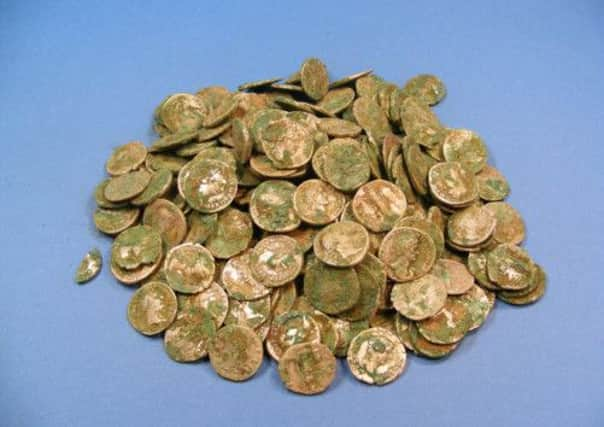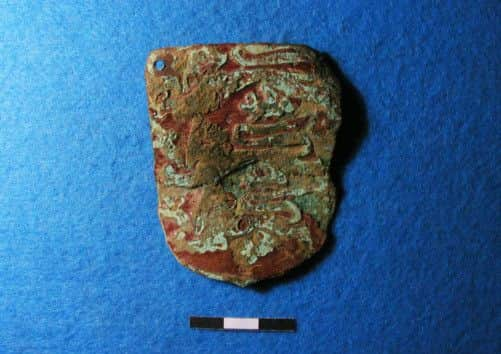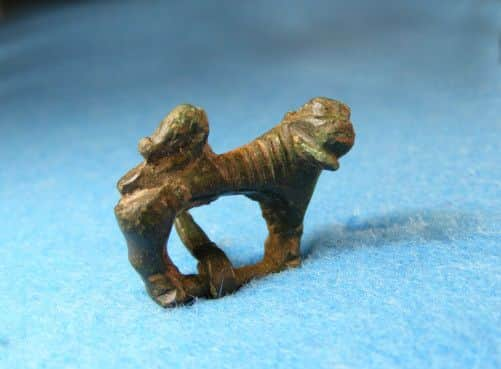Scotland coining in it out on the treasure trail


A hoard of coins used to bribe hostile clans after the Romans retreated from Scotland were also handed to the Crown.
There were 316 cases of historical items being handed over to the Treasure Trove Unit in 2012-13, up from 152 the previous year. The unit aims to ensure significant or important finds are kept for the nation and go on show in museums.
Advertisement
Hide AdThe finders were given payments ranging from £5 to £10,000 as a reward, depending on the value of the items. These payments totalled £36,510 last year, with most of them being for a few hundred pounds.


The major finds included the heraldic badge discovered by Fraser Richardson on St Mary’s Isle, Kirkcudbrightshire. The mount shows the royal arms of England, the three lions passant guardant, as used between 1198 and 1340.
Described as a “large and visually impressive object most likely from a leather satchel or chest”, the Treasure Trove Unit, based in Edinburgh, said it was likely to have belonged to an English diplomat.
Experts say it gives rise to images of Edward I – known as Longshanks or the Hammer of the Scots – and his battles with William Wallace, although it is more likely to have been carried by someone negotiating between the English and the southern counties of Scotland.
Galloway remained politically independent and culturally distinct from the Scottish kingdom, even as the wars of independence raged, until the mid-13th century.


The item has been allocated to the Dumfries & Galloway Museums Service for public display.
Advertisement
Hide AdAmong the other significant finds was the coin hoard of 219 denarii dated circa AD200. The Crown said the date of the deposition would suggest it might be connected with the bribing of the native population to which the Roman Empire resorted when it had withdrawn from Scotland. The coins have gone to the Scottish Borders Museum Service.
Karl Driske, from Cardenden, Fife, discovered two brooches in the shape of hearts in a field outside Kirkcaldy earlier this year after 35 years of searching for artefacts with a metal detector.
Advertisement
Hide AdOne brooch bears the inscription IHESUS NAZARENUS – Jesus of Nazareth – which it was believed would protect the wearer from worldly harm. “With the brooches, it seems likely that they have been given by husband to wife, and quite clearly it’s not an everyday piece of jewellery”, Mr Driske said.
“I would say this was someone with money, perhaps a laird, a landowner or someone higher in position. It was engraved with Lombardic French-style lettering but written in Latin, which we think was in vogue at that time.”
Stuart Campbell, from the Treasure Trove Unit, said: “Many of these are fascinating objects that will have been given as romantic gestures, whether they are from husband to wife or parents to a child. They are from such a different culture in such a very different time.”
In 2011, David Booth, chief ranger at Blair Drummond Safari Park, found four golden neck ornaments, or torcs, near Stirling, and they had been in the ground for an estimated 2,000 years.
He received a payment of £462,000 – the largest reward to date.